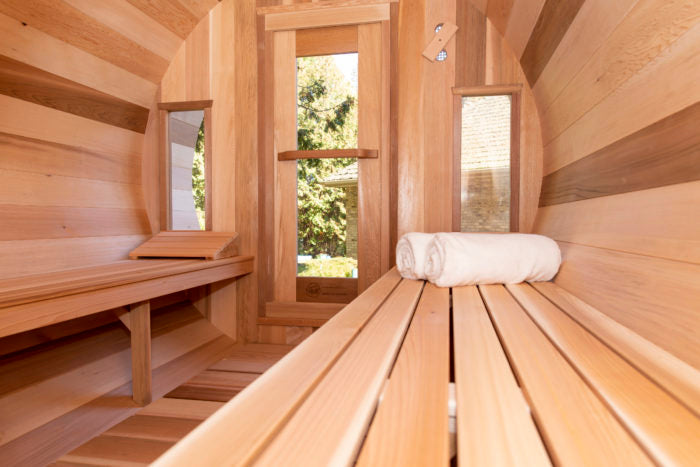Some Known Factual Statements About Traditional Sauna
Some Known Factual Statements About Traditional Sauna
Blog Article
Fascination About Traditional Sauna
Table of ContentsLittle Known Questions About Traditional Sauna.9 Simple Techniques For Traditional SaunaGetting The Traditional Sauna To WorkLittle Known Questions About Traditional Sauna.Getting The Traditional Sauna To Work
The majority of the weight lost in a sauna is water loss and is re-gained upon rehydrating. Nonetheless, undoubtedly sauna can be a vital part of a healthy and balanced weight loss program. To check out the distinctions between conventional and IR saunas, I will certainly divide these into verifiable, theoretical, and produced distinctions.Therefore, the best point in the saunawhich goes to the ceiling directly over the sauna heateris usually in between 185 and 190 F. Claims that a standard sauna exceeds 200 F is merely not real and not relevant for electrical saunas marketed in the United States. The temperature for a far-infrared sauna is typically established in between 120 and 140 F; however, unlike the standard sauna, the goal in and IR space is not to accomplish a high temperature level.
Due to the fact that of this, the temperature level difference is virtually irrelevant, since excessive sweating causes both sauna kinds, yet the approach of heating up the body is different. In an IR sauna the bather will feel hot and will sweat profusely, yet at much lower temperatures. Traditional Sauna. Hence, if the goal is to invest longer time periods in the sauna, the IR sauna is a great option

Indicators on Traditional Sauna You Need To Know

When the heat is accomplished, the aspects cycle on and off to preserve the high temperature level. Traditional Sauna. The majority of traditional sauna individuals appreciate pouring water over the rocks to produce heavy steam to raise sauna moisture levels. The advantages of pouring water over the rocks include: making the area a lot more comfy, dampening the nasal flows, and enabling the usage of aromatherapy by mixing crucial oils with the water
In a far-infrared sauna, the warm front pass through the body to effectively warm the body and elevate the body core temperature level. To attain this raised temperature level, Far-infrared emitters produce infrared power which is close to the very same wavelength as that which the body normally emitsoften described as the "Crucial Array" of 7 to 14 microns), so the power is well received by the body.
When the power gets in the body, it causes the body temperature to boost and eventually leads to sweat. In an infrared sauna it's vital for the emitters/heaters to continue to be on almost constantly. Since there is no mass of rocks to keep heat, the sauna will certainly cool down if the emitters closed off.
How Traditional Sauna can Save You Time, Stress, and Money.
As pointed out above, the sauna bather in an infrared area wants to position himself before operating emitters to obtain maximum take click here for info advantage of the warm. The heating time for the 2 spaces can be very various, depending upon just how the spaces are used. For a traditional sauna, a bather should permit 30-40 mins for the space to achieve a desired temperature level and to appropriately pre-heat the rocks.
A well constructed sauna will generally achieve a temperature of 150-160 F in about 30-40 minutes. For hotter temperatures, the area might need to warm for a longer duration.

Traditional saunas tend to be larger (hence make use of even more electrical power) than infrared saunas, although conventional saunas are definitely offered in one and two person sizes too. For a two-person standard sauna, 5x6 or 5x7 size is most popular. The leading bench can comfortably seat two or 3 individuals and is likewise enough time to relax during the sauna session.
Some Known Factual Statements About Traditional Sauna
The typical cost per kWH of electricity in the united state is approximately $0.11 - Traditional Sauna, so a 4.5 kW heating system will set you back roughly $.50 to compete one hour, if the heating unit runs continuously for one hour. Typically a sauna heating system will run for 75% of the initial hour and 50% of subsequent hours on given that the elements cycle once the established temperature level is achieved
A 2 person far-infrared space is generally physically smaller sized than a conventional sauna, frequently concerning 4' x 4' or smaller. The IR home heating system is usually 1.5-1.7 kW making use of a 120 volt 15 amp plug-in service. Given that the space can be made use of quicker than a sauna space, we will certainly assume the space is used read the full info here for to of an hour consisting of warmth up time.
There is a look here rarely talked about distinction in the social experience between the 2 spaces. While our society has actually shed some of the social advantage of the standard sauna experience, it can be very socially satisfying. From family members time in the sauna, to heart-felt discussions with loved ones, to sauna partiesthe typical sauna experience can bring about intimate mingling.
Traditional Sauna Can Be Fun For Anyone
Many higher end infrared areas include colored light treatment, noise systems and full-glass fronts.
Report this page